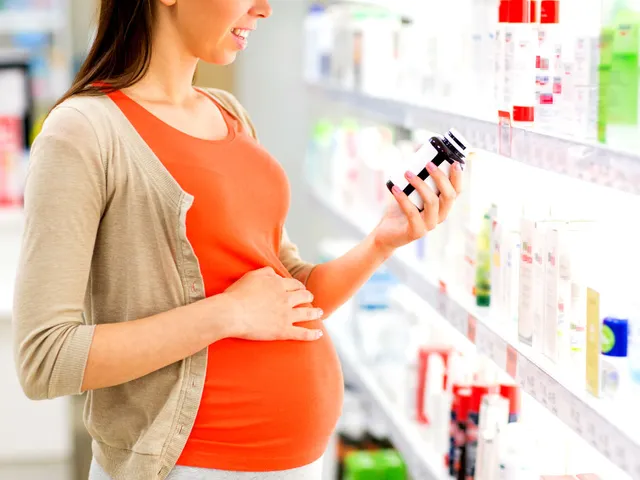
Endometriosis is a chronic condition that impacts a significant number of women globally. It's characterized by the growth of tissue similar to the lining inside the uterus, but outside of it. This misplaced tissue behaves like regular uterine lining, thickening and breaking down during the menstrual cycle, leading to inflammation and pain.
The link between inflammation and endometriosis is crucial. Inflammation exacerbates the pain and discomfort while contributing to the progression of the condition. Delving into the specifics can help sufferers understand the importance of managing inflammation as part of their treatment plan.
The causes of endometriosis are still not completely understood, but factors like genetics, immune system disorders, and hormonal imbalances are often involved. Recognizing these underlying causes is essential for developing effective treatment strategies.
Common symptoms of endometriosis include severe menstrual cramps, chronic pelvic pain, and infertility. Identifying these symptoms early can lead to more timely and effective interventions.
There are several treatment options available, ranging from medication to surgery. Hormonal therapies, pain relief medications, and lifestyle changes like diet and exercise can help manage the condition. A holistic approach that combines medical treatment with lifestyle modifications often yields the best results for those living with endometriosis.
- What is Endometriosis?
- How Inflammation Plays a Role
- Common Causes of Endometriosis
- Symptoms to Watch Out For
- Effective Treatments and Management Options
What is Endometriosis?
Endometriosis is a chronic medical condition that affects millions of women around the world, yet it remains underdiagnosed and poorly understood. At its core, endometriosis involves the growth of endometrial-like tissue outside the uterus. This tissue is similar to the lining found inside the uterus, which sheds during menstrual periods. However, when it grows outside the uterus, it has nowhere to go, causing intense pain and inflammation.
Typically, this aberrant tissue can be found on the ovaries, fallopian tubes, the outer surface of the uterus, and other pelvic structures. In rare cases, endometrial-like tissue has even been found on organs such as the lungs and brain. The ongoing monthly bleeding, in response to hormonal cycles, leads to inflammation and scarring, which exacerbates the pain many women experience.
The exact cause of endometriosis remains elusive, but several theories exist. One leading theory is retrograde menstruation, where menstrual blood flows backward through the fallopian tubes into the pelvic cavity instead of leaving the body. Another theory suggests that certain cells outside the uterus transform into endometrial-like cells. Moreover, genetic factors likely play a significant role, as the condition tends to run in families, indicating a hereditary component.
According to the World Health Organization (WHO), around 10% of women of reproductive age globally are affected by endometriosis, underscoring the need for heightened awareness and better diagnostic methods.
Endometriosis might sometimes remain asymptomatic, making it challenging to diagnose early. However, common symptoms include severe menstrual cramps, chronic pelvic pain, pain during intercourse, and infertility. Some women might also experience digestive issues like bloating and bowel irregularities, as the condition can affect the intestines.
Diagnosis typically involves a mix of patient history, physical exams, imaging tests like ultrasounds, and sometimes laparoscopy, which allows direct visualization of the pelvic organs. This complexity in diagnosis often leads to significant delays, with many women suffering from symptoms for years before receiving a definitive diagnosis.
Given its impacts on quality of life, mental health, and fertility, greater awareness and early intervention are crucial. By understanding what endometriosis is, women can advocate for themselves more effectively in medical settings and seek appropriate treatments earlier, helping to manage symptoms and improve overall well-being.
How Inflammation Plays a Role
Inflammation is a key player in the development and progression of endometriosis. When endometrial tissue grows outside the uterus, it still acts as it would within the uterus, thickening and breaking down with each menstrual cycle. However, unlike the tissue within the uterus, this displaced tissue has no way to exit the body. The body responds to this situation with inflammation, as it would to any other form of injury or irritation.
This inflammatory response involves the release of substances called cytokines and prostaglandins. These compounds are part of the body's natural defense mechanism, but in the case of endometriosis, they can cause significant pain, swelling, and further tissue growth. The presence of these inflammatory substances in the pelvic region leads to the chronic pain and discomfort that women with endometriosis often experience.
"Understanding the inflammatory process in endometriosis helps medical professionals develop better treatment strategies," says Dr. Jane Smith, a leading specialist in women's health. "Reducing inflammation can be a crucial step in managing symptoms and improving quality of life."
Inflammation can also lead to the formation of adhesions and scar tissue within the pelvic cavity. These adhesions can bind organs together, causing even more pain and complications. For example, if the tissue binds the ovaries and fallopian tubes, it can interfere with the normal process of ovulation and fertility. This is why inflammation is such a major concern in endometriosis management.
Research indicates that women with endometriosis often have higher levels of inflammatory markers in their blood and pelvic fluid. These markers suggest that the body's immune system is in a constant state of alert, contributing to the pain and other symptoms. Addressing this inflammation through various treatments can help manage these symptoms.
One way to reduce inflammation is through the use of nonsteroidal anti-inflammatory drugs (NSAIDs). These medications can help lower the levels of prostaglandins and relieve pain. Another approach is hormonal therapy, which can decrease the menstrual flow and, consequently, the amount of tissue that breaks down and causes inflammation.
Diet and lifestyle changes can also play a role in managing inflammation. A diet rich in anti-inflammatory foods, such as fruits, vegetables, and omega-3 fatty acids, can help. Regular exercise, adequate sleep, and stress management techniques like yoga and meditation can also reduce inflammation and improve overall well-being.
In severe cases, surgical intervention may be necessary to remove as much of the endometrial tissue as possible. This can reduce inflammation and pain, especially if the adhesions and scar tissue are causing significant complications. However, surgery is usually considered only when other treatments have not been successful.
Considering the significant impact of inflammation on endometriosis, a multifaceted approach to treatment is often the most effective. By combining medication, lifestyle changes, and possibly surgical options, women with endometriosis can achieve better symptom management and a higher quality of life. Understanding and addressing the role of inflammation is crucial in this journey.
Common Causes of Endometriosis
Endometriosis is a complex condition, and while its exact cause remains a mystery, researchers have identified several factors that could contribute to its development. Understanding these potential causes can provide insight into the condition and guide effective treatment strategies.
One of the primary theories is retrograde menstruation. This occurs when menstrual blood flows backward through the fallopian tubes into the pelvic cavity instead of leaving the body. This process may cause endometrial cells to implant and grow outside the uterus, resulting in endometriosis. Though many women experience some degree of retrograde menstruation, not everyone develops endometriosis, suggesting other factors must be at play.
Genetics also seem to play a significant role. Women with a family history of endometriosis are more likely to develop the condition themselves. Studies have revealed certain genetic markers associated with endometriosis, indicating a hereditary predisposition. This genetic link suggests that some women have an inherent susceptibility to the disorder, which environmental or lifestyle factors may trigger.
"Endometriosis has a substantial hereditary component, and identifying genetic risk factors can improve our understanding of its pathogenesis," notes Dr. Stacey Missmer, a leading researcher in endometriosis genetics.
Immune system dysfunction is another contributing factor. In a healthy immune system, endometrial cells located outside the uterus would typically be identified and destroyed. However, in women with endometriosis, the immune system may fail to act against these misplaced cells, allowing them to grow and proliferate. This immune response failure creates a state of chronic inflammation, which exacerbates pain and further disease progression.
Hormonal imbalances also influence the development of endometriosis. The condition is estrogen-dependent, meaning that elevated levels of estrogen can stimulate the growth of ectopic endometrial tissue. This hormone's role is evidenced by the fact that endometriosis symptoms often improve during menopause, when estrogen levels naturally decline.
Environmental Factors
Environmental factors are gaining attention as potential contributors to endometriosis. Exposure to certain chemicals, such as dioxins and polychlorinated biphenyls (PCBs), has been linked to an increased risk. These substances can disrupt hormone function and may promote the development of the disease. Lifestyle choices, including diet and physical activity, also play a role in managing hormone levels and inflammation, further influencing the condition.
Finally, it’s important to consider the possibility of metaplasia, which is the transformation of one type of cell into another. Some researchers believe that in certain circumstances, cells lining the pelvic cavity could transform into endometrial cells. This theory could explain cases of endometriosis that occur in regions not typically affected by retrograde menstruation.
While no single cause can definitively explain all cases of endometriosis, recognizing these potential factors helps in understanding the multifaceted nature of the disease. Combining genetic, immunological, hormonal, and environmental perspectives provides a more comprehensive view of endometriosis and can lead to more effective treatment and management strategies for those affected.
Symptoms to Watch Out For
Endometriosis can exhibit a range of symptoms, which can vary significantly from one person to another. The hallmark symptom is intense pelvic pain, often associated with menstrual periods. This pain can begin before menstruation and extend several days into the period, sometimes accompanied by lower back and abdominal discomfort. It's worth noting that the severity of the pain does not necessarily correlate with the extent of the condition; mild endometriosis can cause severe pain, while advanced endometriosis may be less painful.
Another common symptom is dysmenorrhea, which refers to particularly painful cramps during menstruation. These cramps often become progressively worse with time. Women with endometriosis can also experience pain during intercourse, a condition known as dyspareunia. This pain is often described as deep and feels more intense than typical discomfort during intercourse. It's a significant symptom that affects the quality of intimate relations.
Pain with bowel movements or urination is another red flag, especially during menstrual periods. This can be distressing and affect daily functioning. Some women with endometriosis suffer from excessive bleeding. This could mean menorrhagia, which is heavy periods, or menometrorrhagia, which denotes bleeding between periods. Recognizing these patterns is crucial for timely medical consultation.
Endometriosis can be a factor in infertility, as it is sometimes first diagnosed in women seeking treatment for infertility. Roughly, 30% to 40% of women with endometriosis may experience difficulty getting pregnant. According to the American Society for Reproductive Medicine, endometriosis is found in 20% to 40% of women who are infertile.
Other symptoms include fatigue, diarrhea, constipation, bloating, and nausea, especially during menstrual periods. These symptoms can often be mistaken for other conditions, which is why many women, unfortunately, receive a delayed diagnosis. It's essential to maintain a symptom diary and share it with your healthcare provider. This practice can aid in identifying patterns and triggers, leading to a more accurate diagnosis.
"Endometriosis is a condition that affects one in ten women during their reproductive years, equating to about 176 million women worldwide." – Endometriosis Foundation of America.
In some cases, endometriosis may manifest in unique ways, such as coughing blood if the endometrial tissue grows in the lungs, or in rare instances, seizures if it spreads to the brain. These are exceptional cases but highlight the invasive nature of this condition.
Awareness is crucial. Understanding and recognizing the symptoms can lead to earlier diagnosis and treatment. If you experience any of these symptoms, consult a healthcare provider for an accurate diagnosis. Treatments are available, and knowing about your condition is the first step towards managing it effectively.
Effective Treatments and Management Options
For those grappling with endometriosis, finding effective treatments can be life-changing. One key approach is the use of medications to manage symptoms and slow the progression of the condition. Pain relief medications, such as nonsteroidal anti-inflammatory drugs (NSAIDs), can help with the pain, though they do not address the underlying problem.
Hormonal therapies are another cornerstone of treatment. Birth control pills, gonadotropin-releasing hormone (GnRH) agonists, and progestin therapies are commonly prescribed. These treatments aim to reduce or eliminate menstruation, thereby reducing the hormonal fluctuations which contribute to endometrial growths. While effective, these therapies can have side effects that need to be managed carefully under medical supervision.
According to Dr. Susan Evans, an expert in endometriosis treatment, "Managing endometriosis effectively often requires a combination of medical treatment and lifestyle adjustments. Hormonal therapies can be a game-changer for many women, but they need to be personalized to each individual's needs."
For some women, lifestyle changes can make a significant difference. Diet plays a crucial role, with anti-inflammatory foods such as fruits, vegetables, and omega-3 fatty acids offering benefits. Regular exercise not only helps manage pain but also boosts overall well-being. Stress reduction techniques, like yoga and meditation, can help alleviate symptoms by reducing the body's overall inflammatory response.
Minimally Invasive Surgery
When medications and lifestyle changes are not enough, surgery might be required. Minimally invasive procedures, like laparoscopy, allow surgeons to remove or destroy endometrial tissue. This type of surgery is quite effective but may not offer a permanent solution, as endometrial tissue can regrow.
Alternative therapies are gaining attention for their potential benefits. Acupuncture, herbal medicine, and chiropractic care are among the most explored options. While research on these treatments is ongoing, many women report relief from these less conventional approaches. It is essential to consult with a healthcare provider before pursuing these alternatives to ensure they are safe and suitable.
Support groups and counseling can also play a critical role in managing endometriosis. Sharing experiences with others who understand the condition can provide emotional support and valuable coping strategies. Mental health support is equally important, as chronic pain and fertility issues associated with endometriosis can lead to anxiety and depression.
Another promising area is the development of new medications and treatments. Ongoing research aims to understand the genetic and molecular basis of endometriosis better, paving the way for more targeted therapies. Clinical trials are underway to explore new drugs that could provide better symptom relief with fewer side effects. As research progresses, the hope is that new, more effective treatments will become available, offering greater relief to those affected by this debilitating condition.





Write a comment